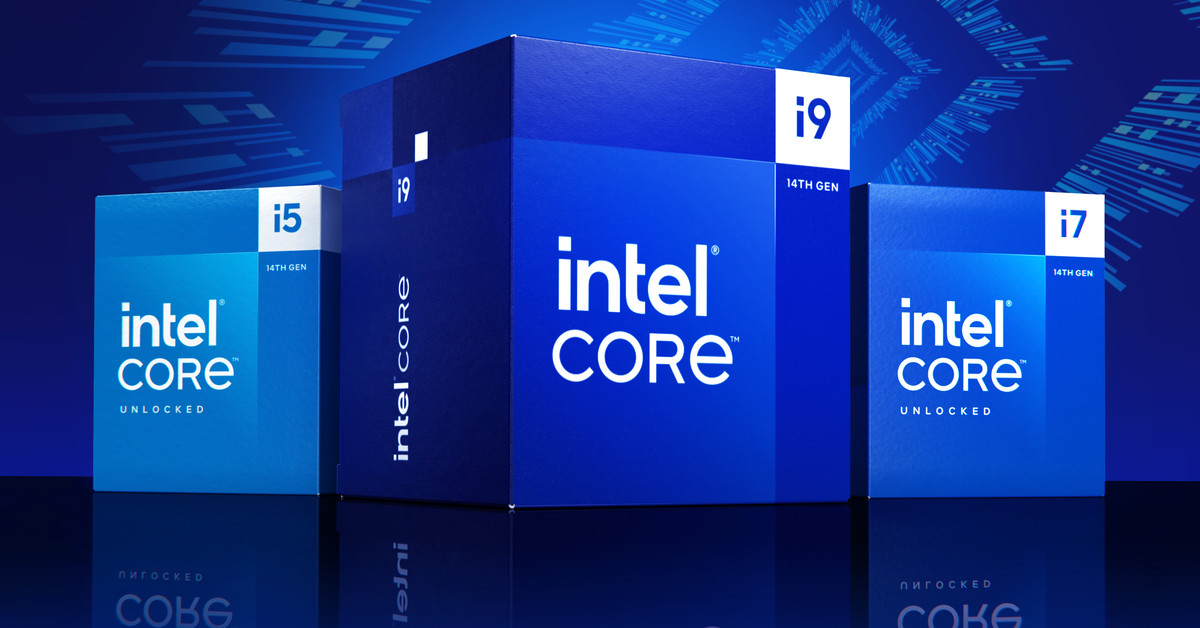- cross-posted to:
- [email protected]
- [email protected]
- cross-posted to:
- [email protected]
- [email protected]
6ghz
Knowing intel and their recent performance gains it just needs a small nuclear reactor as a PSU and liquid oxygen cooling for light desktop use.
the devil is in the words “up to 6ghz” it only gonna hit it with the requeriment that you said
I guess the upside is that you don’t have to mess with overclocking haha. Just slap a liquid cooler in and you don’t have to change the clock because it still won’t hit 6ghz for more than 15 seconds.
I expect a huge boost to speed and then throttling back once temps get high enough.
…You mean like every other CPU on the market?
When I say I can give people up to 10 inches they seem pretty disappointed when I don’t deliver, assuming it’ll be the same here with the silicone lottery with some CPUs going to struggle to maintain 6GHZ
LOL!
I9’s - 1000w powerdraw for guaranteed boosting capabilities.
Problem is, no thermal solution for this fire hazard is yet to be invented.
As a very early purchaser of an i7-920 this comment hurts me.
Sorry man.
I swear my comment was not personal!
LOL
My i7 “laptop” would burn my lap, it was not a laptop.
Or they are going back to old tried and true methods and reducing the IPCs for higher clocks like they did in the move from Pentium 3 to Pentium 4.
Hmmm I have a 1kw power supply and a d15, so maybe it’s time to upgrade from my still-amazing 9900k.
Might also want to upgrade your dice to d20 while you’re at it.
Buy our new stuff. Promise we didn’t fake numbers this time and/or make new security vulnerabilities.
security vulnerabilities
oof.
Honestly if there were a hardware manufacturer that didn’t have the intel management engine style functionality or AMD’s equivalent of it, I would build my next laptop with that even if if the base clock and shared cache was rated for half that amount.
System76 make linux-based computers, and they specifically ship them with the IME disabled. I know that’s not exactly what you ask for, but it’s similar in nature
What’s the downside of having it disabled?
The downside of disabling it is the chance of bricking your expensive silicon, as the drivers to it are mysteriously inaccessible to the operating system, but I literally can’t think of anything else to add once it’s already down. It’s not-end user facing, there’s no API for it, it’s basically just there to be a firmware back door for the NSA and possibly extremely skilled foreign hackers. It doesn’t affect the actual processing layer of the chip at all IIRC.
To the average user: literally nothing.
I actually considered a thelios or whatever they call their desktop systems are called but, the fact that their motherboards don’t support liquid cooling blocks was a turn off for me. Id get a laptop but they are so very expensive. If only I had the money, it would be my first choice however. Certainly now that Linux gaming has become just as good if not even a better experience than on wendoze.
Promise we didn’t fake numbers
That’s why you wait for reviews, marketing numbers will always be pumped up
Comes with a free space heater too. Neat.
This is the best summary I could come up with:
Intel is launching its 14th Gen desktop processors this week, promising boost frequencies of 6GHz out of the box for its flagship Core i9-14900K.
Known as Raptor Lake Refresh, Intel is maintaining pricing for its 14th Gen Core i9, i7, and i5 processors this year, sticking to the same retail pricing as the 13th Gen when these new chips launch on October 17th.
The 6GHz boost on the new Core i9-14900K makes it the “fastest desktop processor at volume,” according to Intel, referring to its special-edition 13900KS that first broke the 6GHz barrier at stock speeds last year but didn’t ship at volume.
These added efficiency cores should help with creator tasks and even gaming performance for titles that take advantage of multithreading.
Intel has some favorable benchmarks against AMD’s Ryzen 9 7950X and even its own previous Core i7 chips for creator tasks, but we’ll have to wait and see how this new Core i7-14700K compares to AMD’s impressive 7800X3D chip for gaming benchmarks.
Intel is also supporting DDR5 5600 and DDR4 3200 memory speeds with its 14th Gen chips.
The original article contains 458 words, the summary contains 181 words. Saved 60%. I’m a bot and I’m open source!
Remember when CPU’s / GPU’s had clockspeeds that didn’t include “up to”
I understand why it’s better net performance doing it this way and better uses the whole potential performance of the chip.
That still doesn’t make me like it, not because of the technical reasons, but because of the way they twist the marketing, it could hit 6ghz for 1 microsecond and they could still claim #nowupto6ghz!
Tell me the base clock, not the “up to… when powered by a fusion reactor” value.
I remember 20 years ago already seeing 3ghz CPUs, isn’t technology supposed to improve fast?
I remember when chips first hit 1GHz around 1999. Tech magazines were claiming that we’d hit 7GHz in 5 years.
What they failed to predict is that you start running into major heat issues if you try to go past ~3GHz. Which is why CPU manufacturers started focusing on other ways to improve performance, such as multiple cores and better memory management.
Just use the heat to power the machine.
Yeah, that’s how it works.
The ultimate fix remains unexplored: reversible computing uses 0-1 pairs. Basically you do logic on the left one and swap them to invert that logical bit. Because the charge is simply transmitted, instead of grounded away or powered up, negligible entropy is involved.
I suspect you’d have to sink the values eventually… but I expect you could send them off “behind the woodshed” for that. Do all the work in some tiny flake of silicon, then transmit a stream of noise to a big dumb block of metal.
And it has. The phone you have is faster than the 3GHz chip back then. A phone powered by a battery. And faster by like 20 times.
My dad had one of the first consumer 3GHz chips available. By the time I inherited it in 2009 it was completely outclassed by a <2GHz dual-core laptop.
That would’ve been a single 3ghz cpu core. Now we have dozens in one chip. Also, the instruction sets and microcode has gotten way better since then as well.
Clock speed isn’t improving that quickly anymore. Other aspects, such as more optimized power consumption, memory speeds, cache sized, less cycle-demanding operations, more cores have been improving faster instead.
We’re running into hard physical limits now, the transistors in each chip are so small that any smaller and they’d start running into quantumn effects that would render them unreliable.
Winter is coming. Time to buy a space heater
or an amd rig
For when you want to sleep in sub zero temps!
I thought Intel was dropping the K9 branding and skipping desktop chips for 14th Gen…
The real question to me is does it come with Microsoft Pluton or not?













